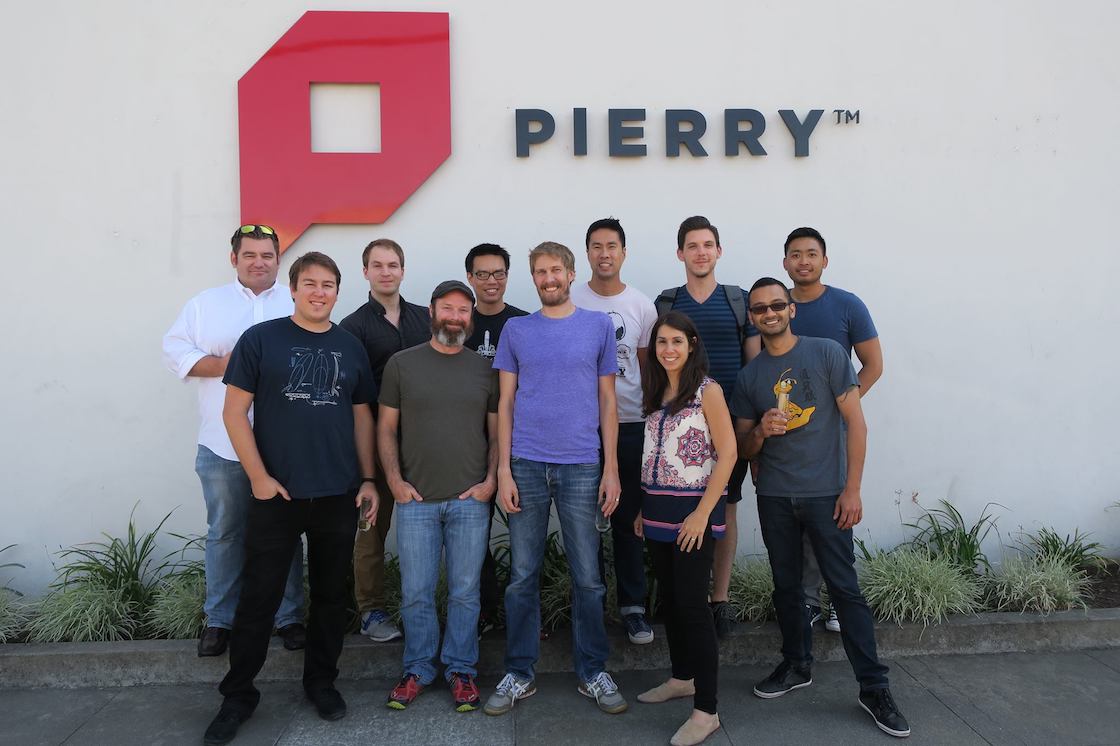 We’re blogging, we’re info-graphing, we’re creating listicles, and gifs, and videos, and images. We need content for our emails, our website, our Snapchat, our Instagram, our Tumblr. New channels for marketing your brand seem to pop-up every day. And in our efforts to help our brand stand out above the rest, we’re all creating more content than ever.
We’re blogging, we’re info-graphing, we’re creating listicles, and gifs, and videos, and images. We need content for our emails, our website, our Snapchat, our Instagram, our Tumblr. New channels for marketing your brand seem to pop-up every day. And in our efforts to help our brand stand out above the rest, we’re all creating more content than ever.
And to be honest, we’re likely all creating far more content than we have to. Why? Because our customers are already creating content for us.
What is User Generated Content?
User generated content is, as the name reflects, content that is generated by the user, a.k.a. your customer, and often comes in the form of a review, photo, video, blog post, or a social media post.
This type of content isn’t created as a result of hour-long strategy sessions, persona development, or a deep analysis of your past content performance. This content is created by a real customer using your products or services in a real way, and sharing it with others.
And with proper permissions, you can post user generated content pretty much anywhere you need content, from your website, to social channels, to emails, to landing pages and banner ads.
Of course, like any piece of content, you don’t want to just use it for the sake of using it. Make sure you have a strategy around the types of user generated content you want to collect, how you’ll use it, why you’re using it, and how you’ll measure its success.
But Is User Generated Content Effective?
65% of millennials feel that user generated content is more honest and genuine [http://investors.bazaarvoice.com/releasedetail.cfm?releaseid=649677] than content put out by brands themselves. 86% find that user generated content is a good indicator of quality products or service.
So yes, user generated content can be extremely effective as it gives consumers an objective view of your product or services, showing your brand and building its reputation in a way that your marketing department can’t.
How Can I Get User Generated Content?
Getting user generated content isn’t as difficult as some marketers may think. Really all you have to do is ask for it.
Reviews
Reviews are one of the oldest forms of user generated content. But don’t anticipate that customers will actively think to go and leave a review on your website after they’ve received their purchase. About a week or so after they’ve received their product, send a quick follow-up email asking them to let you know what they thought.
Often just asking for a star ranking (i.e. 1-5 stars) and a simple description of their experience with your product or service is enough, but you could also take the review process one step further by asking customers to upload a photo of them using the product.
This tactic can be especially useful for retailers looking to create content shaped around how actual customers are wearing the items they sell. Not only does having these customer images make it easier for potential buyers to see what a certain item could look like on them, but it also allows retailers to show of the versatility of their pieces without having to pay for a stylist, models, etc.
Social Media
As social media has grown in popularity and new channels have been born, it’s become one of the best ways to gather user generated content.
Brand specific hashtags and special promotion hashtags are easy ways for consumers to tag images of how they’re using your products in their everyday life; for millennials in particular, social media is the way they find new products. Statistics show that 68% of 18-to-34 year olds are more likely to make a purchase after seeing it on an influencer’s or friend’s social media account.
Taking the time to create a clever or memorable hashtag [https://blog.hootsuite.com/4-excellent-user-generated-content-contests-using-social-media/] allows you to take advantage of content those users likely would have been posting anyway.
But don’t just promote hashtag campaigns on your social media channels. Include it on your website, in your email newsletters, on non-digital advertising spots, etc. to maximize the exposure of the campaign and the potential for engagement.
Contests
If you want to obtain a lot of user generated content in a short amount of time, a contest is the perfect way to go.
There are a number of tools you can use to help you run your contest, but in some cases, you can keep it even more simple than that.
Take for instance, Kissmetrics, a B2B behavior analytics platform, that created a Pinterest board to house all the entries for their Messy Desk contest. The entry with the most re-pins won. It was a fun, simple contest that engaged their audience, helped promote their brand through sharing, and gave them some fodder for their blog.
How Can I Get Started with User Generated Content?
First, think about where you might have some gaps in your content strategy, or where you could use some added support. Maybe you’re not seeing the type of engagement you’d like on your Facebook page, or perhaps you need some fresher content to liven up your monthly newsletter.
You then want to consider your goals around user generated content, regardless of whether you’re doing a one-off campaign, or if this will be part of an on-going effort. When you know what you’re working to achieve, you’ll be better equipped to determine where to seek out user generated content and how to ask for it.
Finally, always make it clear that the content you’re sharing is from a real customer. Your brand should engage with this user and their content as if your brand is a person and the customer is a long-time friend. This can help further promote engagement and help you drum up even more user-generated content.



 Think about the current goals you have for your digital marketing program. Do they include boosting sales? Growing traffic to your website? Increasing subscriber engagement? And how are you measuring the success of these goals? Are you using metrics like page views, email opens, and total revenue stats?
Think about the current goals you have for your digital marketing program. Do they include boosting sales? Growing traffic to your website? Increasing subscriber engagement? And how are you measuring the success of these goals? Are you using metrics like page views, email opens, and total revenue stats? It’s no secret that in the digital marketing world, the skills of developers are in high demand—particularly the skills of developers familiar with Salesforce and Salesforce Marketing Cloud. However, many the curriculum of most undergraduate programs and coding boot camps don’t have the opportunity to cover the many intricacies of these complex marketing platforms, meaning employers are left to fill that gap, often resorting to developers having to learn as they go on live-client accounts.
It’s no secret that in the digital marketing world, the skills of developers are in high demand—particularly the skills of developers familiar with Salesforce and Salesforce Marketing Cloud. However, many the curriculum of most undergraduate programs and coding boot camps don’t have the opportunity to cover the many intricacies of these complex marketing platforms, meaning employers are left to fill that gap, often resorting to developers having to learn as they go on live-client accounts. We’re blogging, we’re info-graphing, we’re creating listicles, and gifs, and videos, and images. We need content for our emails, our website, our Snapchat, our Instagram, our Tumblr. New channels for marketing your brand seem to pop-up every day. And in our efforts to help our brand stand out above the rest,
We’re blogging, we’re info-graphing, we’re creating listicles, and gifs, and videos, and images. We need content for our emails, our website, our Snapchat, our Instagram, our Tumblr. New channels for marketing your brand seem to pop-up every day. And in our efforts to help our brand stand out above the rest,  Every brand likes watching their subscriber list grow. Why? Well, that’s a great question that not many stop to ask. Really, the only reason we get excited when we see our subscriber numbers climb day-to-day and month-to-month is because, in marketing, bigger numbers are better. Except when they’re not…
Every brand likes watching their subscriber list grow. Why? Well, that’s a great question that not many stop to ask. Really, the only reason we get excited when we see our subscriber numbers climb day-to-day and month-to-month is because, in marketing, bigger numbers are better. Except when they’re not…

 The moment of truth has arrived. Your deployment went smoothly, the artwork was enticing, and now you are ready to see your results. You have followed all the email best practices and so your metrics should all be good. You scan the results and see successful open rates. Your click-throughs are double digits and your deliverability is as close to 100% as it gets. Then you see it—the unsubscribes. The number isn’t significantly high, but your heart sinks. After all your time and effort, people still do not want to receive your communications. And while understandably disheartening, unsubscribe requests are not necessarily a bad thing. In fact, there are multiple reasons you actually want people to unsubscribe.
The moment of truth has arrived. Your deployment went smoothly, the artwork was enticing, and now you are ready to see your results. You have followed all the email best practices and so your metrics should all be good. You scan the results and see successful open rates. Your click-throughs are double digits and your deliverability is as close to 100% as it gets. Then you see it—the unsubscribes. The number isn’t significantly high, but your heart sinks. After all your time and effort, people still do not want to receive your communications. And while understandably disheartening, unsubscribe requests are not necessarily a bad thing. In fact, there are multiple reasons you actually want people to unsubscribe.